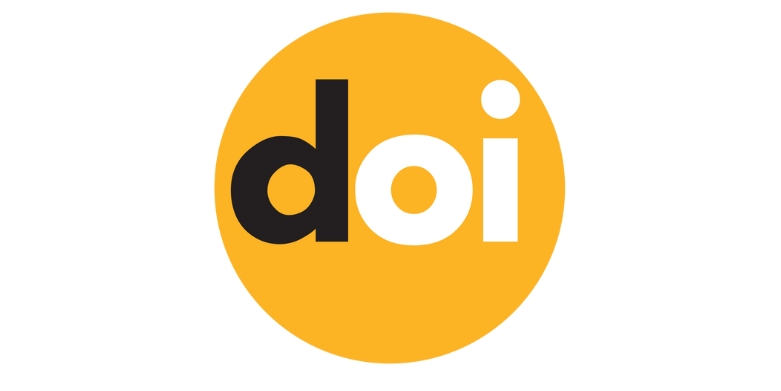Comparison of Pharmacological Treatment with Psychotherapeutic Interventions on Borderline Personality Disorder
DOI:
https://doi.org/10.63053/ijhes.96Keywords:
Depression, Borderline Personality Disorder, Anxiety, Cognitive-Behavioral TherapyAbstract
Borderline personality disorder (BPD) is a mental health condition. People with BPD have extreme mood swings, unstable relationships and trouble controlling their emotions. They also have a higher risk of suicide and self-destructive behavior. Talk therapy is the main treatment for BPD. However due to the diverse clinical presentations of borderline personality disorder, various therapeutic approaches, including cognitive-behavioral interventions and pharmacological treatments, have been offered. Therefore, this study aimed to compare pharmacological treatment with psychotherapeutic interventions for borderline personality disorder. In this clinical trial approved by the university's ethics committee, 30 randomly selected male patients were assigned to three groups. After obtaining consent, the Beck Anxiety Inventory (BAI) and the Beck Depression Inventory (BDI) were administered as pre-test measures. The first group received drug therapy (olanzapine), while the second group underwent eight 90-minute sessions of cognitive-behavioral therapy. The control group received no interventions. The data were analyzed using SPSS version 22 software. Significant differences were found between the intervention groups and the control group; both interventions had a significant positive effect on the anxiety and depression of patients with borderline personality disorder, and the therapeutic effects were sustained in the follow-up stage (p < 0.05). Additionally, the follow-up results indicated that the effectiveness of cognitive-behavioral therapy on anxiety and depression was greater than that of drug therapy. Cognitive-behavioral therapy can effectively control anxiety and depression in patients with borderline personality disorder
References
Akbari, J. (2008). Effect of cognitive behavioral therapy and pharmacotherapy on anxiety and impulsivity symptoms in men with borderline personality disorder. Journal of Fundamentals of Mental Health, 10, 317-323.
Beck, A., & Rush, J. (2000). Cognitive therapy of depression. New York: Guilford Press.
Davidson, K., Norric, J., Tyrer, P., Gumley, A., Tata, P., Murray, H., et al. (2007). The effectiveness of cognitive behavior therapy for borderline personality disorder: Results from the Boscot trial. Research. USA: University of Glasgow, Gartnavel Royal Hospital, 5, 104-105. DOI: https://doi.org/10.1521/pedi.2006.20.5.450
Fatehi Zadeh, M., Shafiee Abadi, A., Etemadi, A., Delavar, A. (1385). A comparison of the effectiveness of two modalities of dialectical behavior therapy and cognitive-behavioral therapy in reducing symptoms of borderline personality disorder in Isfahan. Psychological Studies, 1385.
Gress Marnat, J., Sharifi, P. (Trans.) (1375). Guide to psychological assessment, 2nd ed. Tehran: Roshd, 225-6.
Gunderson, J., & Gabard, G. O. (2000). Psychotherapy for borderline personality disorder. Washington, DC: American Psychiatry, 5, 22.
Linda, A., McDavid, J., & Linehan, M. M. (1999). Pharmacotherapy for borderline personality disorder: A review of the literature and recommendations for treatment. Journal of Clinical Psychology and Medical Settings, 6, 114.
Montazeri, M. S., Neshat-Doost, H. T., Abedi, M. R., & Abedi, A. (2013). Effectiveness of Schema Therapy on symptoms intensity reduction and depression in a patient with obsessive-compulsive personality disorder: A single-case study. Journal of Clinical Psychology, 5, 35-46.
Paris, P. (2005). Recent advances in the treatment of borderline personality disorder. Canadian Journal of Psychiatry, 50, 436. DOI: https://doi.org/10.1177/070674370505000802
Pretzer, J., & Beck, J. S. (2004). Cognitive therapy of personality disorders: Twenty years of progress. In Contemporary Cognitive Therapy: Theory, Research, and Practice (pp. 299-318).
Ripoll, L. H., Triebwasser, J., & Siever, L. J. (2011). Evidence-based pharmacotherapy for personality disorders. International Journal of Neuropsychopharmacology, 14, 12571288. DOI: https://doi.org/10.1017/S1461145711000071
Sharifi, A., Karami, A. (1385). Guide to the clinical multiaxial inventory questionnaire Millon III, 1st ed. Tehran: Ravan Memoari, 9-27.
Skodol, A. E., Oldham, J. M., Bender, D. S., Dyck, I. R., Stout, R. L., Morey, L. C., ... & Gunderson, J. G. (2005). Dimensional representations of DSM-IV personality disorders: Relationships to functional impairment. American Journal of Psychiatry, 162, 1919-1925. DOI: https://doi.org/10.1176/appi.ajp.162.10.1919
Young, J., Closco, J., & Vishar, M. (2021). Schema Therapy: A Practitioners Guide (5th ed.). (H. Pour & Z. Anduz, Trans.). Tehran: Arjmand.
Zanarini, M. C., Frankenburg, F. R., Reich, D. B., Silk, K. R., Hudson, J. I., & McSweeney, L. B. (2007). The subsyndromal phenomenology of borderline personality disorder: A 10-year follow-up study. American Journal of Psychiatry, 164, 929-935. DOI: https://doi.org/10.1176/ajp.2007.164.6.929
Downloads
Published
How to Cite
Issue
Section
License
Copyright (c) 2024 Authors

This work is licensed under a Creative Commons Attribution 4.0 International License.
The journal is licensed under a Attribution 4.0 International (CC BY 4.0).
You are free to:
- Share — copy and redistribute the material in any medium or format for any purpose, even commercially.
- Adapt — remix, transform, and build upon the material for any purpose, even commercially.
- The licensor cannot revoke these freedoms as long as you follow the license terms.
Under the following terms:
- Attribution - You must give appropriate credit , provide a link to the license, and indicate if changes were made . You may do so in any reasonable manner, but not in any way that suggests the licensor endorses you or your use.
- No additional restrictions - You may not apply legal terms or technological measures that legally restrict others from doing anything the license permits.












